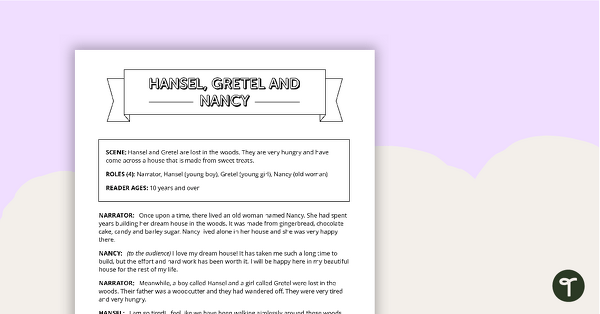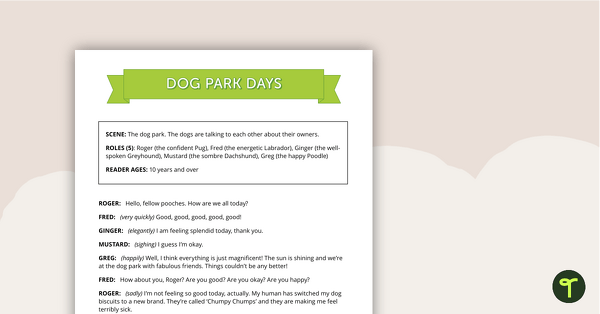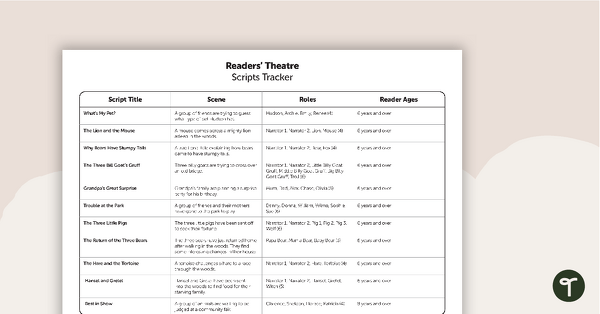Readers Theater Scripts Teaching Resources
Build reading fluency in your classroom with printable readers' theater scripts created by teachers for your elementary classroom!
This curriculum-aligned teaching resource collection is full of scripts for fairy tales, nursery rhymes and original plays designed by our teacher team to build reading fluency while creating fun and memorable opportunities to read! Each has undergone careful review by a member of our teacher team to ensure it's ready for your lesson plans and your classroom!
New to using this ELA teaching tool? Read on for a readers' theater primer from our teacher team!
What Is Readers’ Theater?
Readers’ Theater is a reading activity that involves students reading a script aloud in a small group. Don't worry — you don't have to put on a big production in the classroom!
There is no need for the students to perform actions, use props, wear costumes or memorize any lines. The goal of the learning experience is to encourage the students to "bring the script alive" through a clear and expressive voice, some facial expressions and some simple gestures.
Research indicates that repeated reading of the same text can significantly improve reading fluency. But many students show little interest in reading the same text multiple times, and understandably so!
That's where readers' theater comes in — it's a great way to engage our students in interesting, enjoyable, and authentic repeated reading activities.
How to Implement Readers’ Theater in the Classroom
- Assign students groups according to the number of character roles in the script. Each group member receives a copy.
- Encourage the students to read the whole script silently to themselves. This enables them to become familiar with the story and the characters.
- Assign each student a role. Some roles may be more text-dense, so consider this before allocating characters.
- Allow the students to read the part that has been assigned to them several times. Encourage the students to check the pronunciations and definitions of any unfamiliar vocabulary.
- Have the students read through their script together as a group. Remind your class to continue reading if they make a mistake so as not to interrupt the flow of the script.
- Encourage each group to decide if any props are needed to perform the script. These should only be used if necessary.
- Have each group take turns sitting in a semi-circle in front of the class. The goal is for the script to be read aloud, with each student reading their part clearly and with expression.
- Facilitate a class discussion with the students after each performance. Encourage kids to provide helpful feedback to the performers.
The Benefits of Readers’ Theater for Students
Readers' Theater places readers firmly in the driver's seat so students do not lose interest easily.
The activity provides a clear and tangible purpose for reading aloud: producing a short drama for others to enjoy.
As if the joy of reading wasn't enough, students can build oral reading fluency through repeated reading. Plus, Readers’ Theater enables students to:
- Share and explore literature with others
- Work collaboratively in a team
- Prepare, view and discuss performances
- Develop confidence
- Increase reading comprehension
- Plus Plan

Readers' Theater Script - Hansel, Gretel and Nancy
A script which can be used during readers' theater or Drama sessions, aimed at students 10 years and over.
- Plus Plan

Readers' Theater Script - Dog Park Days
A script which can be used during readers' theater or Drama sessions, aimed at students 10 years and over.
- Plus Plan

Readers' Theater - Scripts Tracker
A document listing all of Teach Starter's scripts for Readers' Theater.